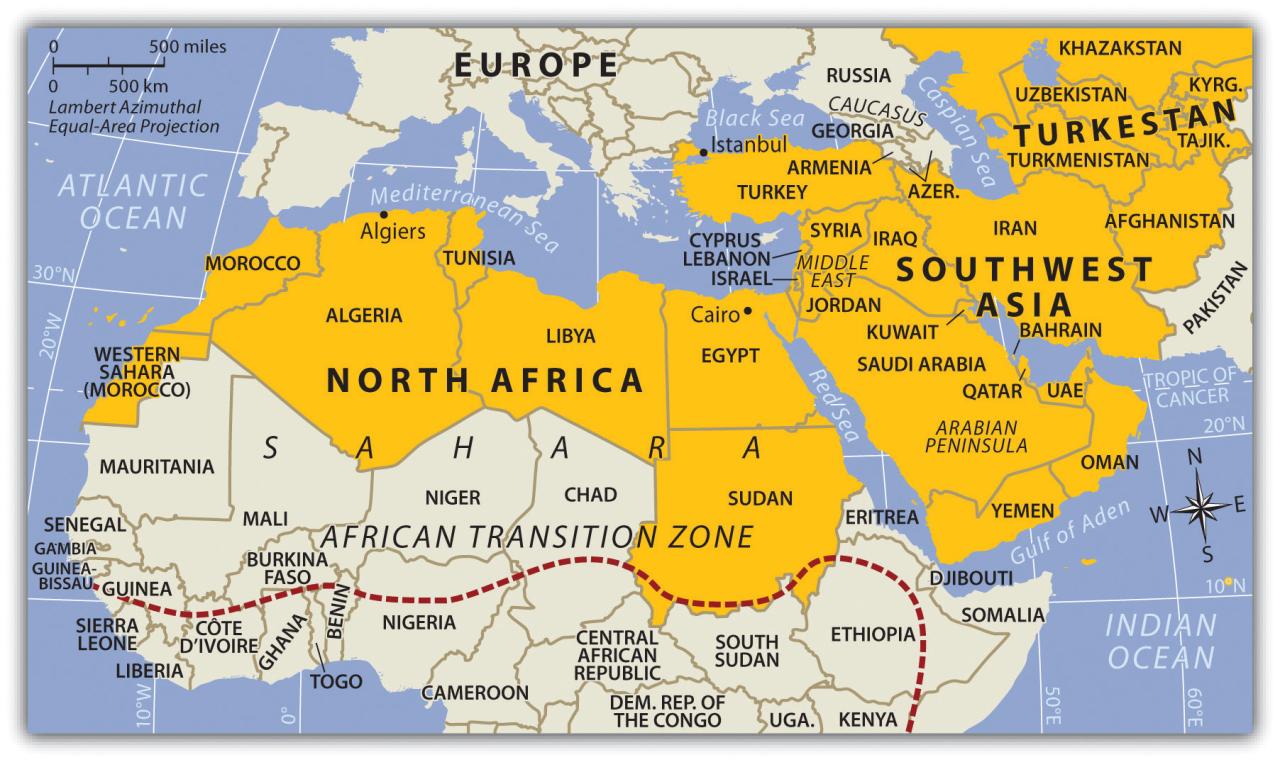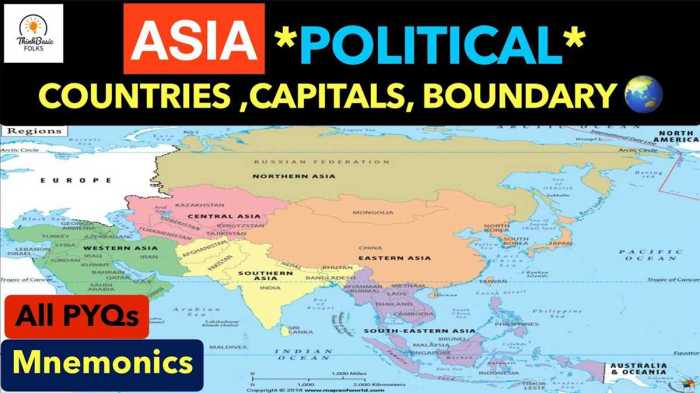Embark on a cartographic journey with our comprehensive blank map of Southwest Asia and North Africa, an invaluable tool for exploring the region’s rich history, diverse cultures, and captivating landscapes.
This map serves as a blank canvas, inviting you to trace the footsteps of ancient civilizations, navigate geopolitical boundaries, and delve into the region’s physical and cultural tapestry.
Blank Map of Southwest Asia and North Africa: An Overview
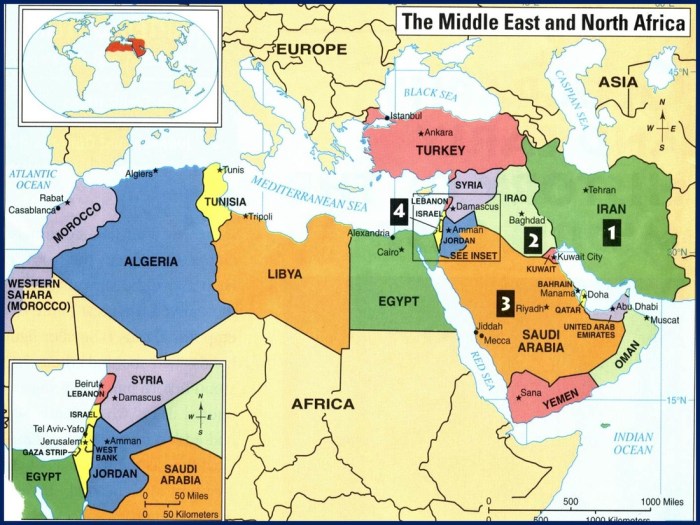
A blank map of Southwest Asia and North Africa is a cartographic representation of the region without any labels or annotations. It encompasses the countries of the Middle East, North Africa, and the Arabian Peninsula, providing a blank canvas for students, educators, and researchers to explore the region’s geography, history, and current affairs.
Blank maps serve several purposes. They allow individuals to learn the locations of countries, cities, and other geographical features by filling in the details themselves. They also facilitate the visualization of historical events and cultural influences by enabling users to mark key locations and draw connections between them.
Benefits of Using a Blank Map for Educational Purposes
- Improves spatial reasoning and map literacy.
- Enhances understanding of geographical relationships and connections.
- Facilitates memorization and recall of geographical information.
- Provides a visual framework for organizing and synthesizing information.
- Promotes critical thinking and problem-solving skills.
Historical Significance of Southwest Asia and North Africa
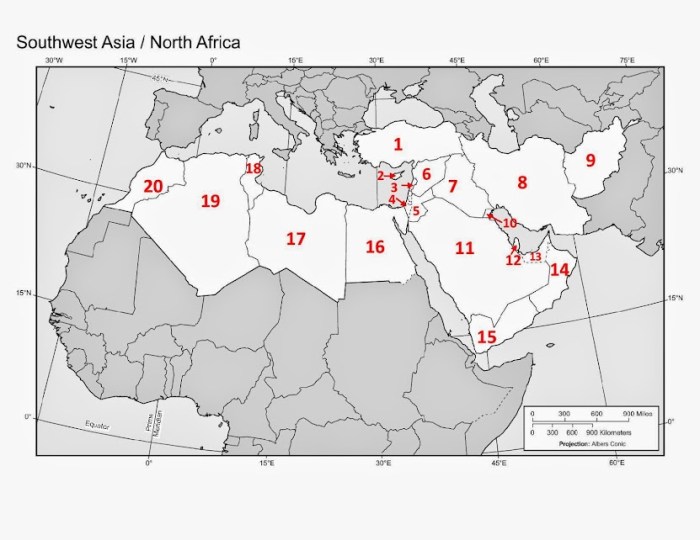
Southwest Asia and North Africa have been home to some of the world’s oldest and most influential civilizations. The region has witnessed the rise and fall of empires, the development of major religions, and the shaping of global trade and commerce.
Ancient Civilizations and Empires, Blank map of southwest asia and north africa
- Mesopotamia (present-day Iraq): Cradle of civilization, home to the Sumerians, Babylonians, and Assyrians.
- Ancient Egypt: Along the Nile River, renowned for its pyramids, pharaohs, and hieroglyphic writing.
- Persian Empire: Spanning from present-day Turkey to India, ruled by the Achaemenid and Sassanid dynasties.
- Arabian Peninsula: Birthplace of Islam and the center of the Arab Caliphate.
Major Historical Events and Cultural Developments
- Rise of Islam: The spread of Islam in the 7th century CE had a profound impact on the region’s culture, politics, and economy.
- Crusades: A series of religious wars between Christians and Muslims from the 11th to 13th centuries.
- Ottoman Empire: A vast empire that ruled over much of Southwest Asia and North Africa from the 13th to 20th centuries.
- European Colonialism: The region was colonized by European powers from the 19th century onward, leaving a lasting legacy.
Physical Features of Southwest Asia and North Africa
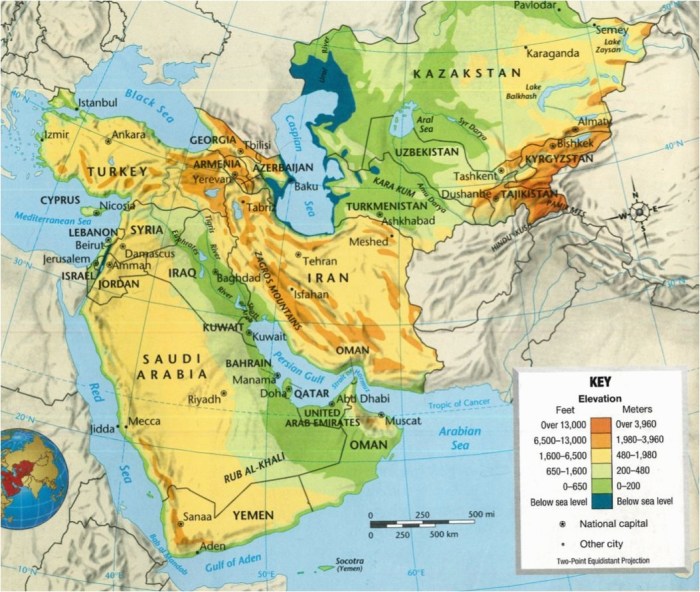
The physical geography of Southwest Asia and North Africa is diverse, ranging from towering mountain ranges to vast deserts and fertile river valleys.
Major Mountain Ranges
- Caucasus Mountains: Forming the border between Europe and Asia.
- Taurus Mountains: Running along the southern coast of Turkey.
- Zagros Mountains: Located in western Iran.
- Atlas Mountains: Spanning across Morocco, Algeria, and Tunisia.
Deserts
- Sahara Desert: The largest hot desert in the world, covering much of North Africa.
- Arabian Desert: A vast desert covering the Arabian Peninsula.
- Syrian Desert: Located in eastern Syria and western Iraq.
Water Bodies
- Mediterranean Sea: A major sea that borders the southern coast of Europe and the northern coast of Africa.
- Red Sea: A narrow sea separating Africa from Asia.
- Persian Gulf: A large body of water bordered by Iran, Iraq, Kuwait, Saudi Arabia, Qatar, Bahrain, and the United Arab Emirates.
- Nile River: The longest river in the world, flowing through Egypt and Sudan.
FAQs
What is the purpose of a blank map?
A blank map provides a neutral canvas for labeling, annotating, and customizing geographical information, making it a versatile tool for educational and research purposes.
What are the benefits of using a blank map for educational purposes?
Blank maps foster active learning, enhance spatial awareness, and encourage students to engage with geographical concepts in a hands-on manner.
